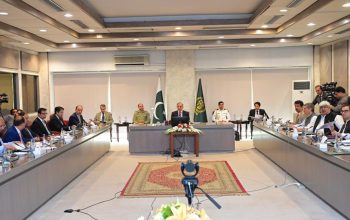Pakistan’s textile exports are likely to increase considerably, by nearly $16.5 billion, during the fiscal year 2020-21 (FY21), making a total export value of $27 billion in the same financial year.
The July-March figures showed that growth in textile and clothing exports came from the value-added sector. The value of exports reached $11.35 billion in the July-March period this year, against $10.41 billion over the corresponding months of last year, showing a growth of 9.06 percent.
The consistent export of the textile sector could continue to grow up to $20 billion in the next financial year, thereby pushing the values of exports of the textile sector to $30 billion in the next financial year.
However, the government should shore up its performance when it comes to ensuring the cost of productions which must be at par or less than the regional competitive market players.
ALSO READ
Interloop Plans to Invest $300 Million in Local Textile Production
The textile industry has capitalized on the given incentives to help the government achieve the ultimate aim of export maximization, job creation, and the realization of economic prosperity.
Pakistan’s export industries (including textiles) witnessed an exceptional growth of 9 percent in 9 months of FY21. The increase in export demonstrates the competitiveness of Pakistan’s exports – when inputs are provided at regionally competitive prices, exports were achieved despite an unfavorable international environment.
The industrial electricity tariff of our competitors is much lower than Pakistan, making us uncompetitive in the increasing market competition. Our objective to become an export “powerhouse” cannot be achieved until power tariffs are revised to a competitive and stable level.
The Patron-in-Chief APTMA, Gohar Ejaz, requests the government for continuation of Regionally Competitive Tariffs of $6.5/MMBtu of Gas/RLNG and 7.5 cents/kWh of Electricity.
Regionally Competitive Energy Tariffs policy proposed by the Pakistan Institute of Development Economics (PIDE) has played a vital role in the current year’s exports. It is critical to sustaining enhanced exports, employment, and in bringing new investment.
Industry fears that the power sector will not be able to deliver on a sustained, stable and competitive basis, which will negatively impact market sentiments. Competition is the key principle for the development and expansion of the industrial market.
The post Pakistan’s Textile Export Likely to Cross $16 Billion appeared first on .



